Kasuisai is an ancient and famous Buddhist temple of the Soto Zen sect located in Fukuroi City with a history of 600 years, founded by Zen master Jochu Tengin in 1401 and famous for the Hina Doll Festival (Kasuisai Hinamatsuri).
The Kasuisai meaning is “temple where sleeping is allowed”. For during the battle that took place 400 years ago, the monk Senrin Tozen saved the life of the young Tokugawa Ieyasu, founder of the Tokugawa shogunate. Later, Tokugawa invited the monk to a feast at Hamamatsu Castle, Senrin Tozen fell asleep, so Ieyasu said gently, “kasui” sleep is allowed.
The temple is about 330.000 square meters, with 25 buildings, 40 places of worship, 50.000 flowers that bloom according to the season.
At Kasuisai Temple, memorial services are held for dolls and stuffed animals that have cared for the children as they grew up over the years, and some of the dolls are displayed at the Kasuisai Hinamatsuri event. Children who visit the temple will receive a doll talisman to pray for their healthy growth.
The temple also hosts festivals such as the Okunoin Fudoson Taisai Festival and the Akiba Fire Festival, as well as seasonal events such as the Hinamatsuri, Wind Chime Festival, Autumn Foliage Tour and Peony Garden.





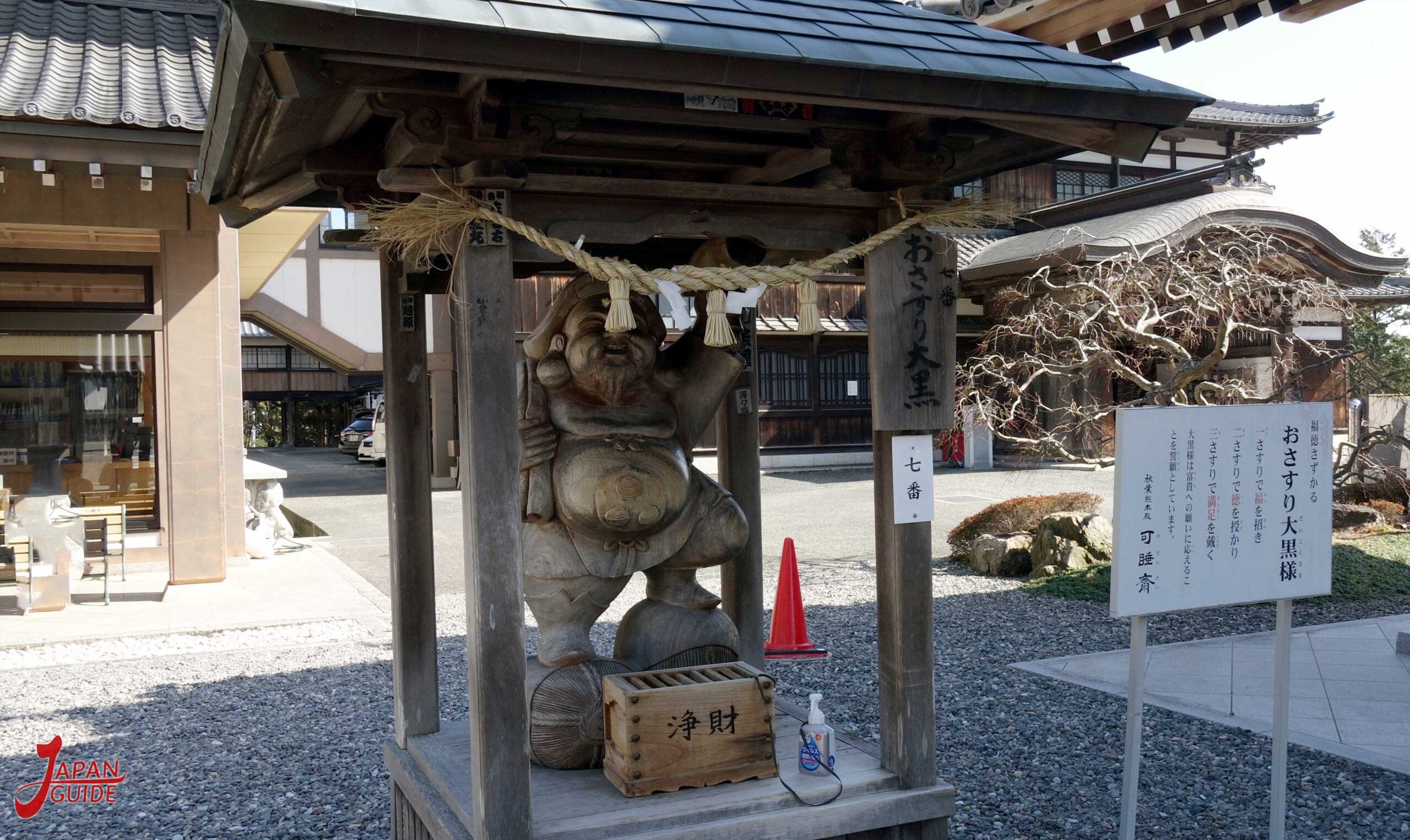
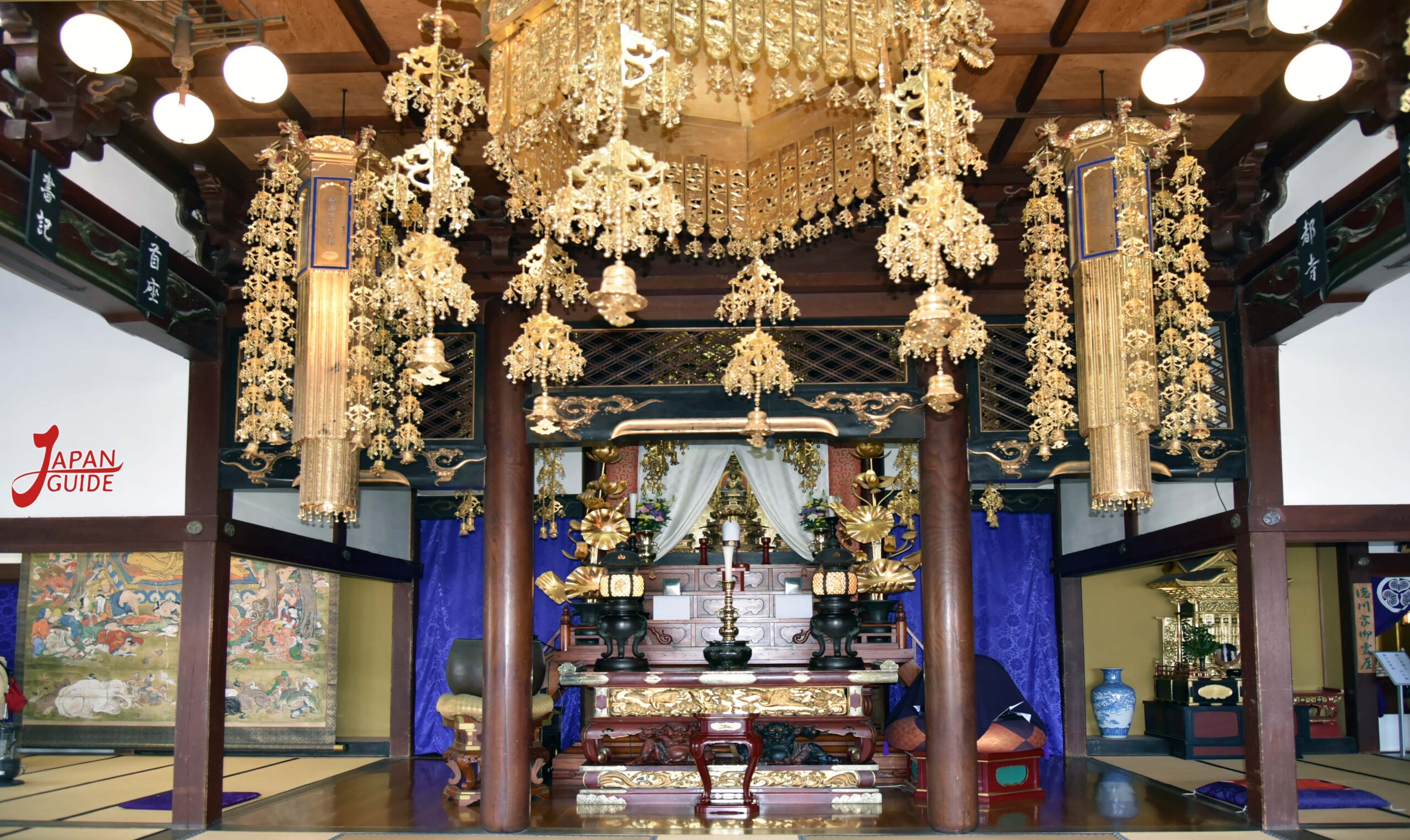






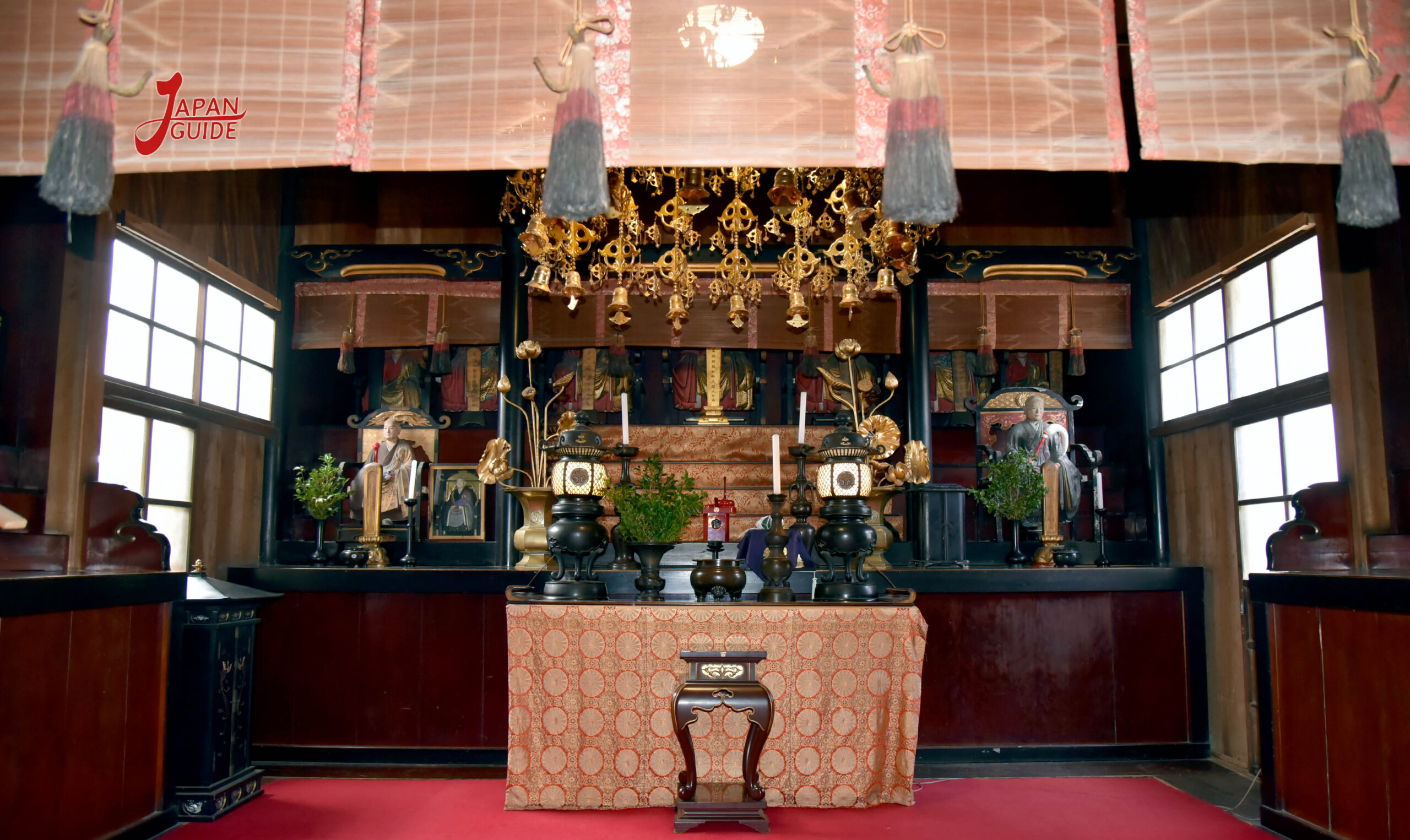



Main Gate
At the entrance to the temple is the main gate, and on either side of the gate the Agyo and Ungyo statues of Kongo Rikishi stare at each other with angry expressions. If you look up, you can see the two looking at each other.
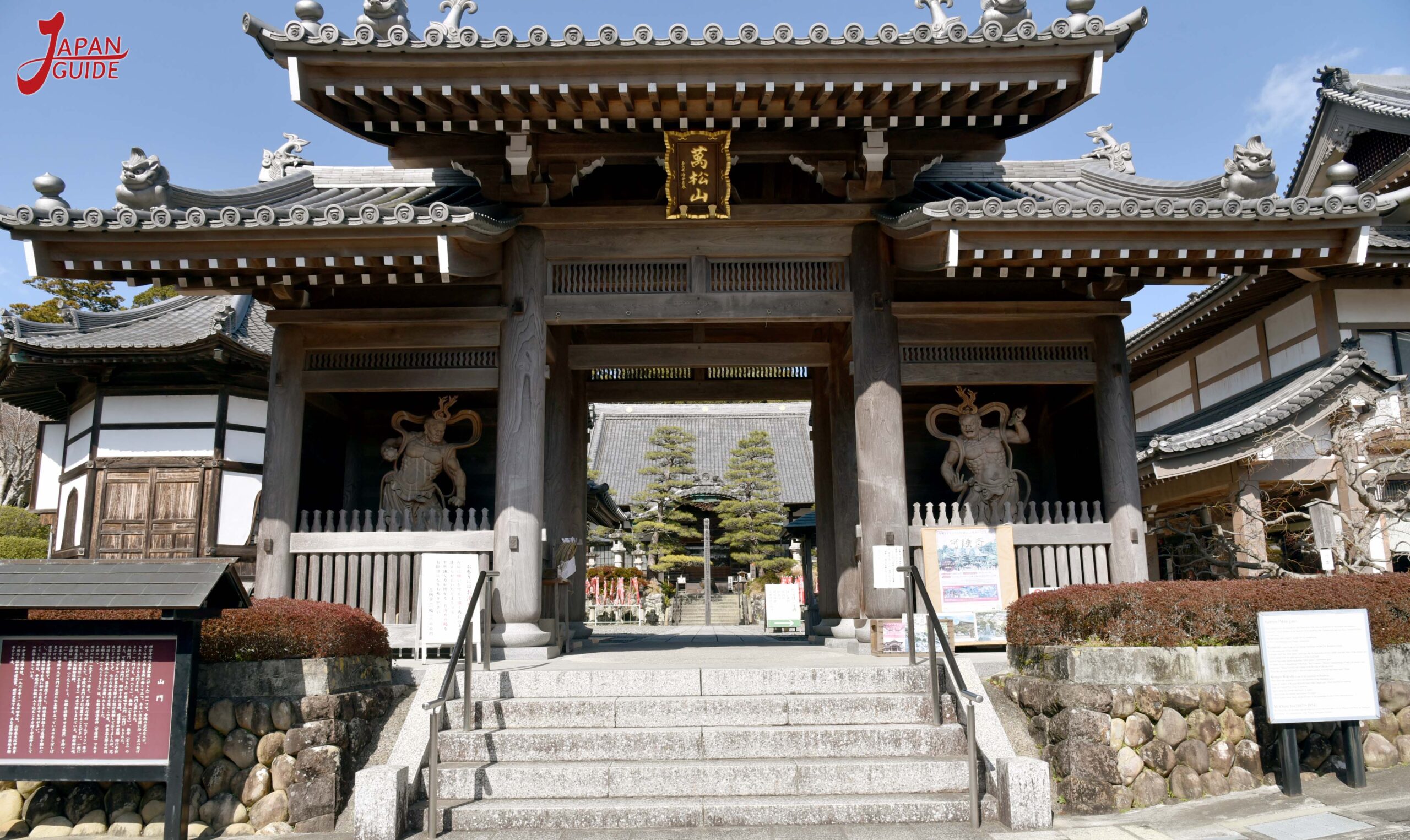


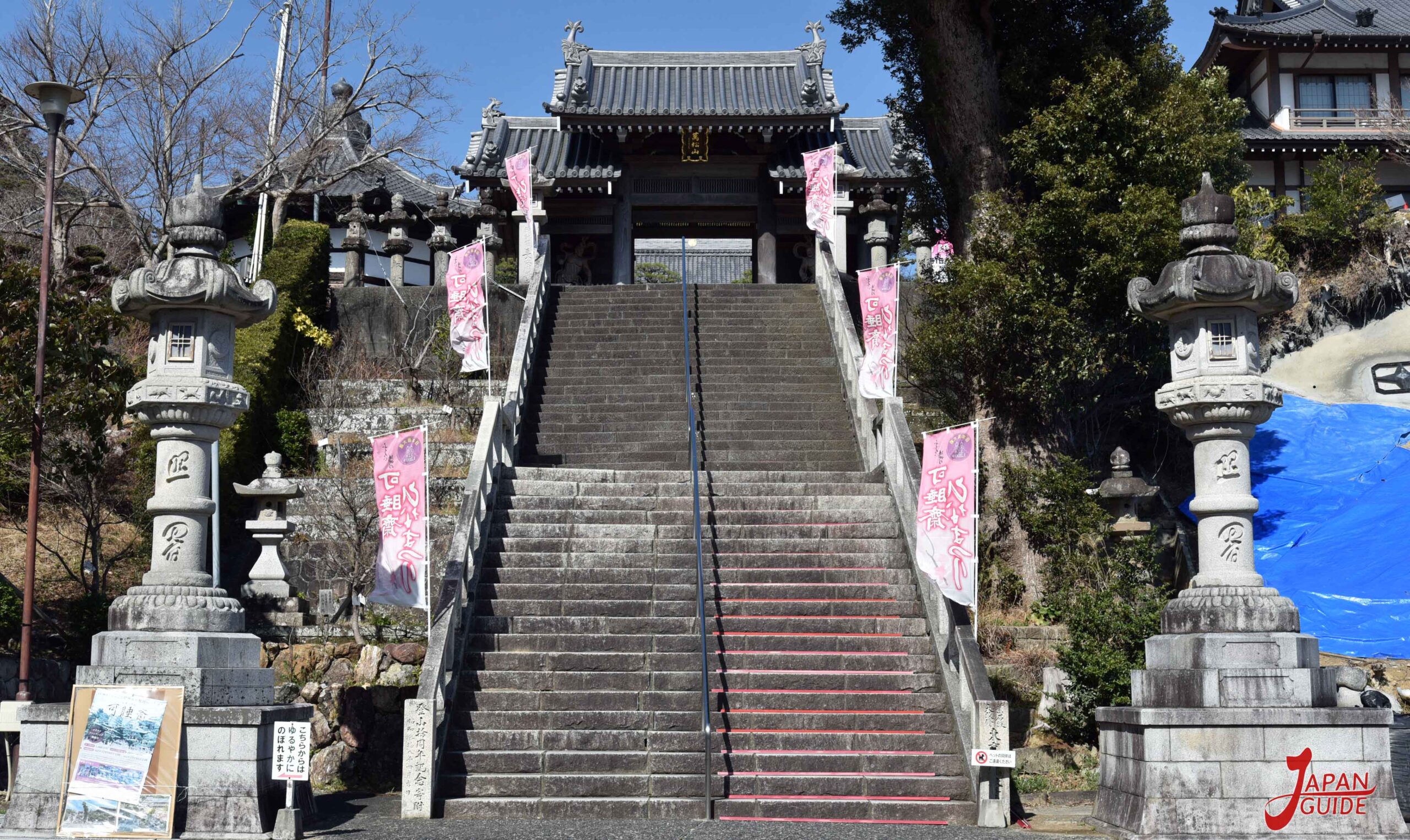
Hall Dharma (Main Hall)
The imposing Irimoya-style main hall was relocated from Shoshu-ji Temple in Tomisato (ancient city of Asaba) in the middle of the Meiji period.


Akiba Sohonden (Goshinden)
As you climb the stairs leading to Akihabara’s main shrine, you’ll see tengu standing beside you, looking down at you. The standing statue is said to be a figure that rises to save people.
The powerful gaze that seems to see right through our hearts makes us want to drop our eyes involuntarily.
Goshinden is the main fire protection temple that enshrines the body of Akiba Sanshakubo Daigogen, which has a history of 1.300 years.


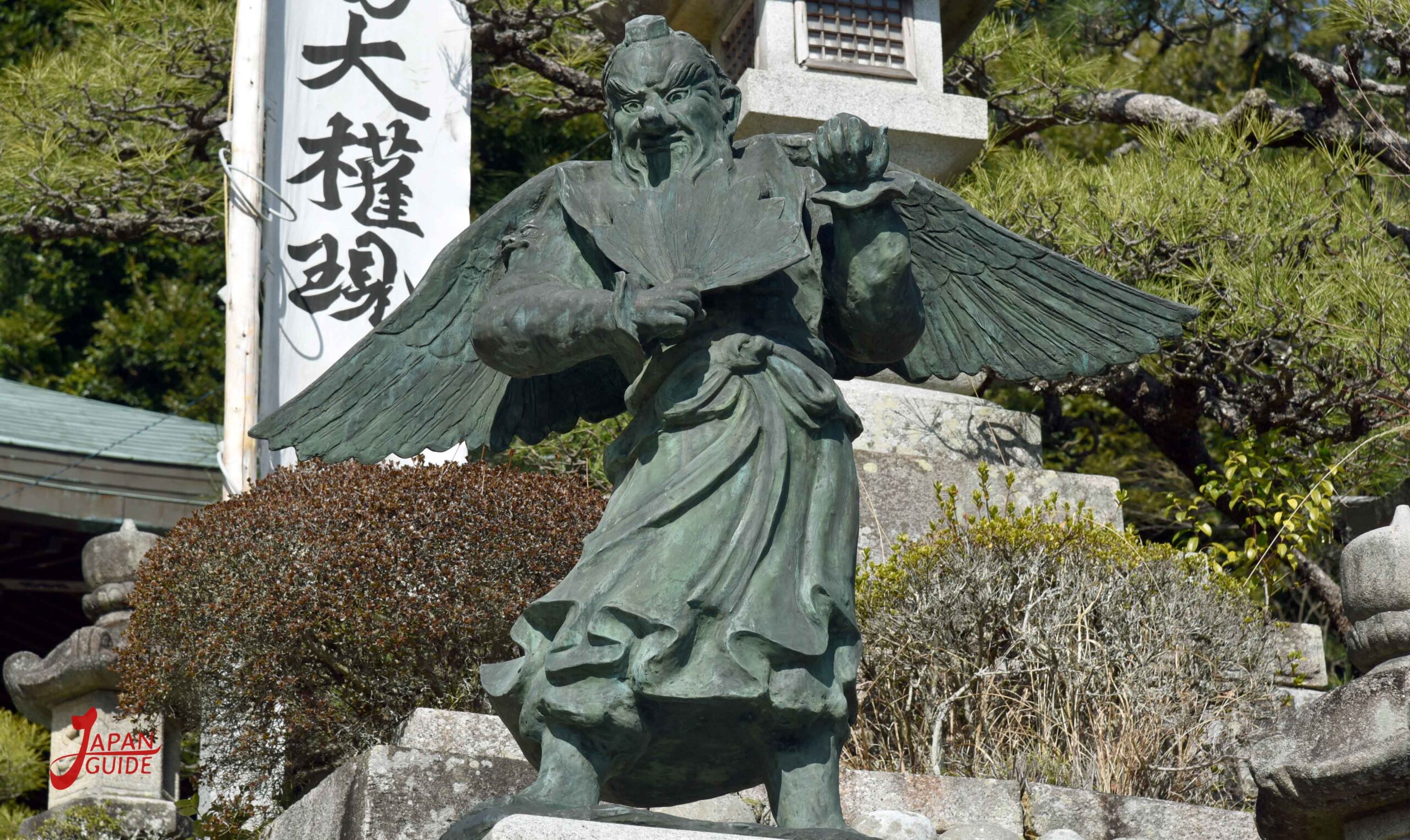
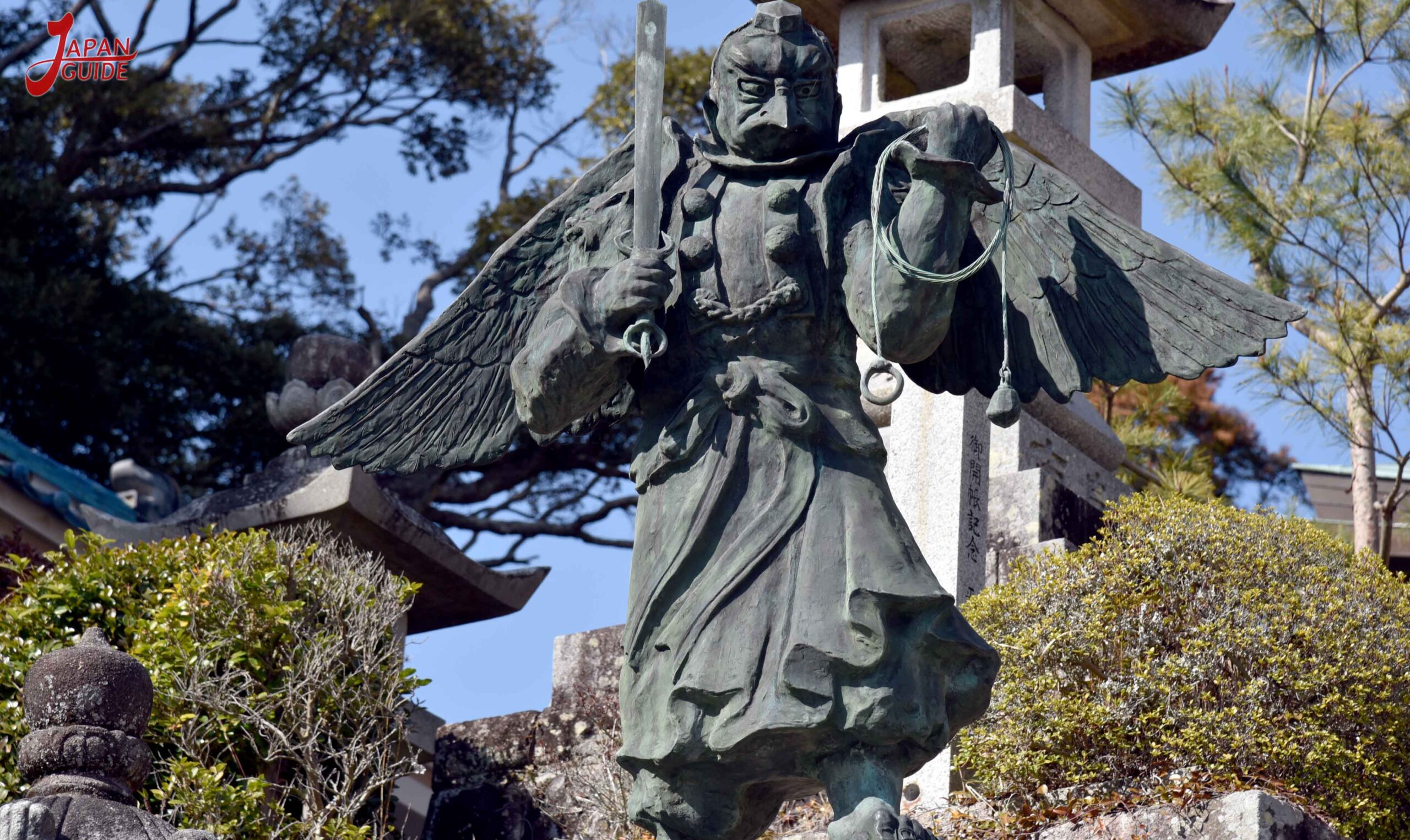
Gokoku Pagoda
White Gokoku Pagoda, widely known as Yasukuni in the East, Gokoku Pagoda in the West, is a 17.1-meter-high reinforced concrete structure built in 1911 in the Gandharan style of India, and the south face is made of granite with a circular dome with artificial stone finish.
On three sides of the main entrance, entasis pillars that imitate horse heads firmly support the small roof that projects from the dome.
Built to enshrine the souls of those who died in the Russo-Japanese War, it has cultural heritage value, with an original design by Mr. Chuta Ito and construction direction of Mr. Toshiki Sano.

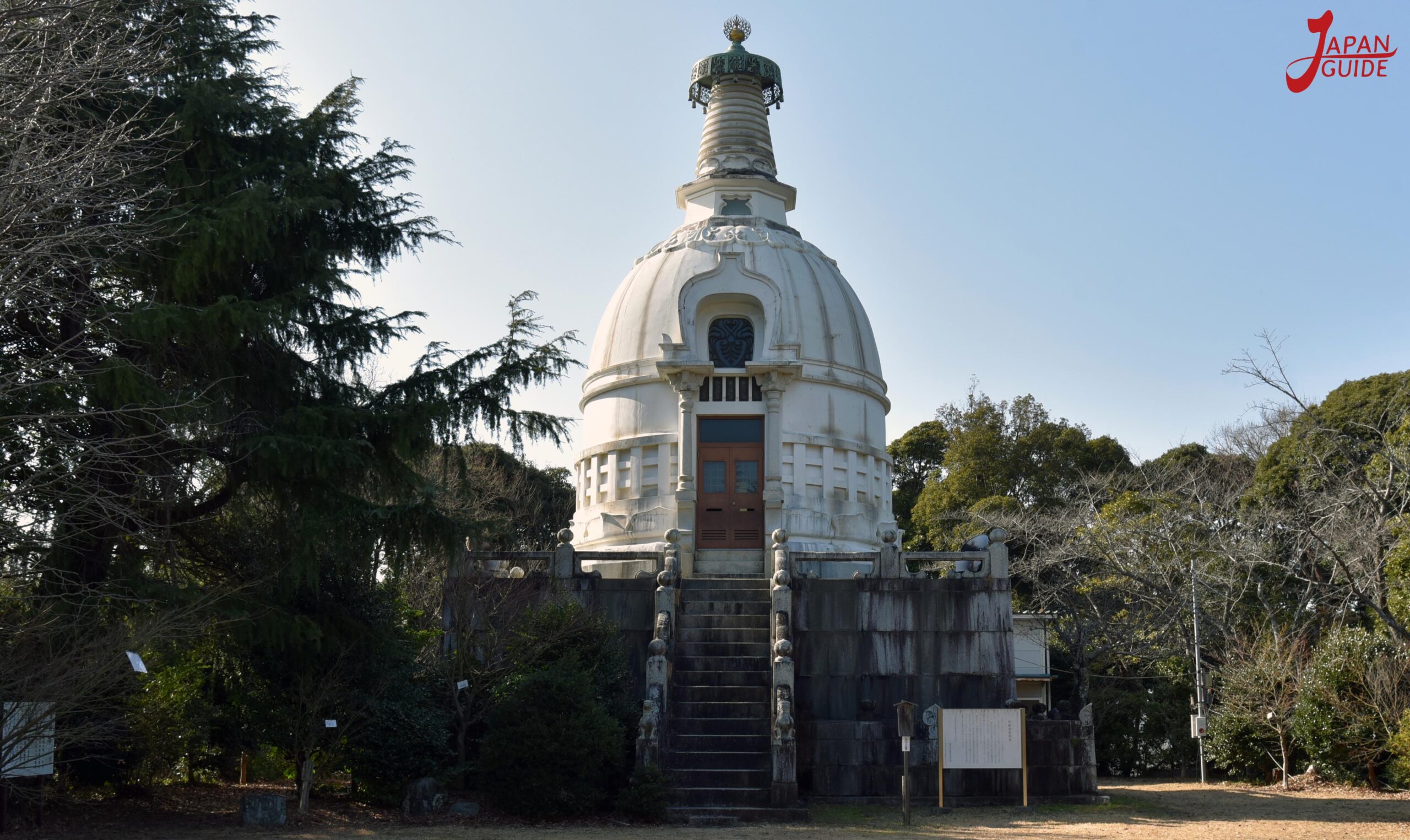
Rinzodo
It is said that if you slowly turn the wheel of wisdom clockwise, you will gain more wisdom, the same merit of reading Daizokyo. In the innermost part of Rinzo-do, the statue of Daishi Fu, the founder of Tenrinzo, is enshrined.

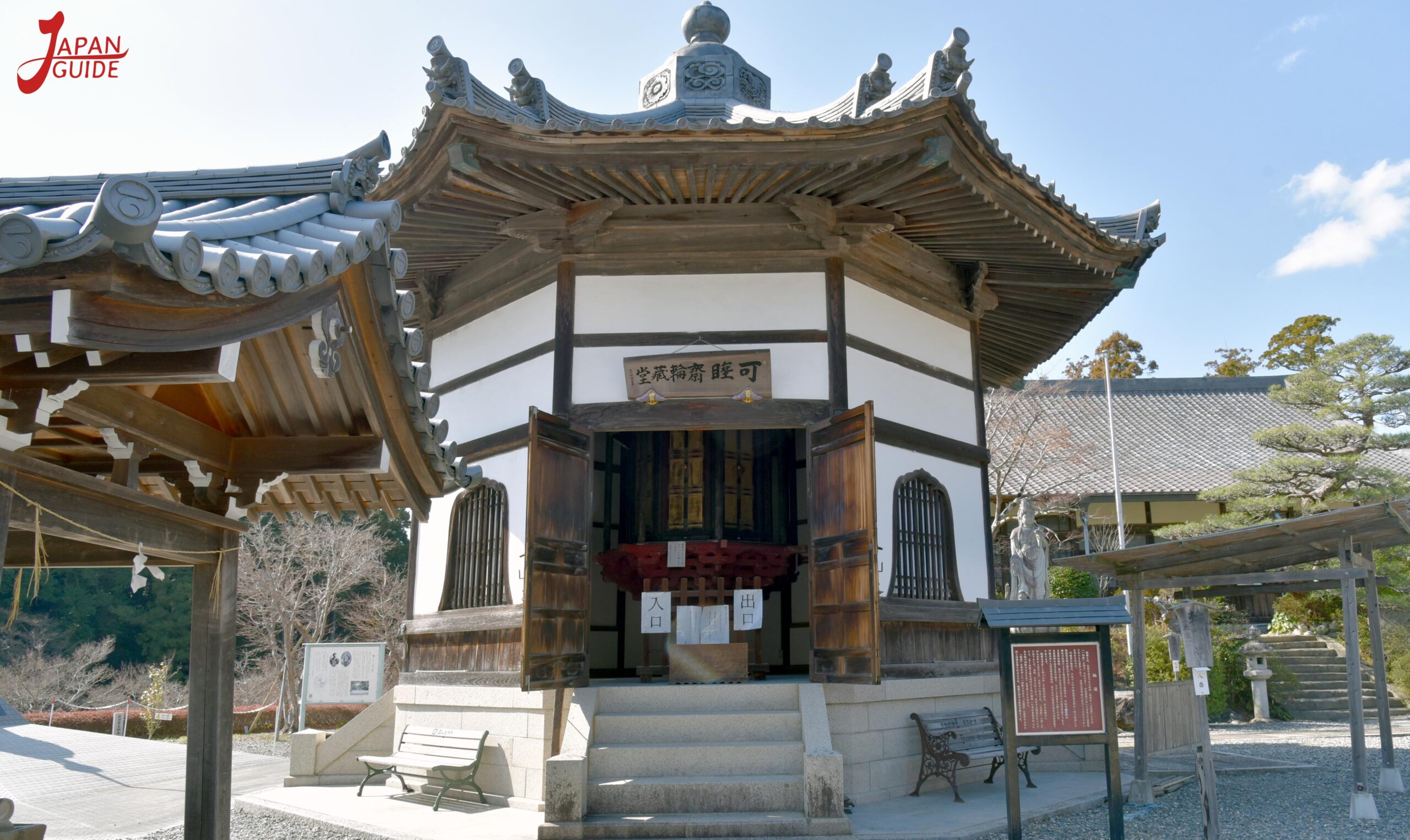

Kasuisai Hole
It is said that during the Warring States period, Tokugawa Ieyasu, who was pursued by Takeda forces led by Takeda Shingen during the Battle of Mikatahara, hid in the Kasuisai Hole to save his life.
After that, Tokugawa Ieyasu conquered the country and created a Japan of peace, which was renamed Shusse Roku no Jiana, similar to his life success story.



Jizodo (former-Toyoken)
Jizodo is an important place for trainee monks to reaffirm their resolve to ascend to Kasui Sodo.
Standing beside the main gate approach before entering Kasuisai, at first glance it looks like it has nothing to do with Kasuisai. But Taro Izun entered the priesthood under the guidance of Nyochu Tenjin Zenji and when he was doing zazen, he felt a miracle from Bishamonten and built a hall as instructed.

Monastery (zazen-do)
The irimoya-zukuri tile-roofed monastery has a dignified atmosphere.
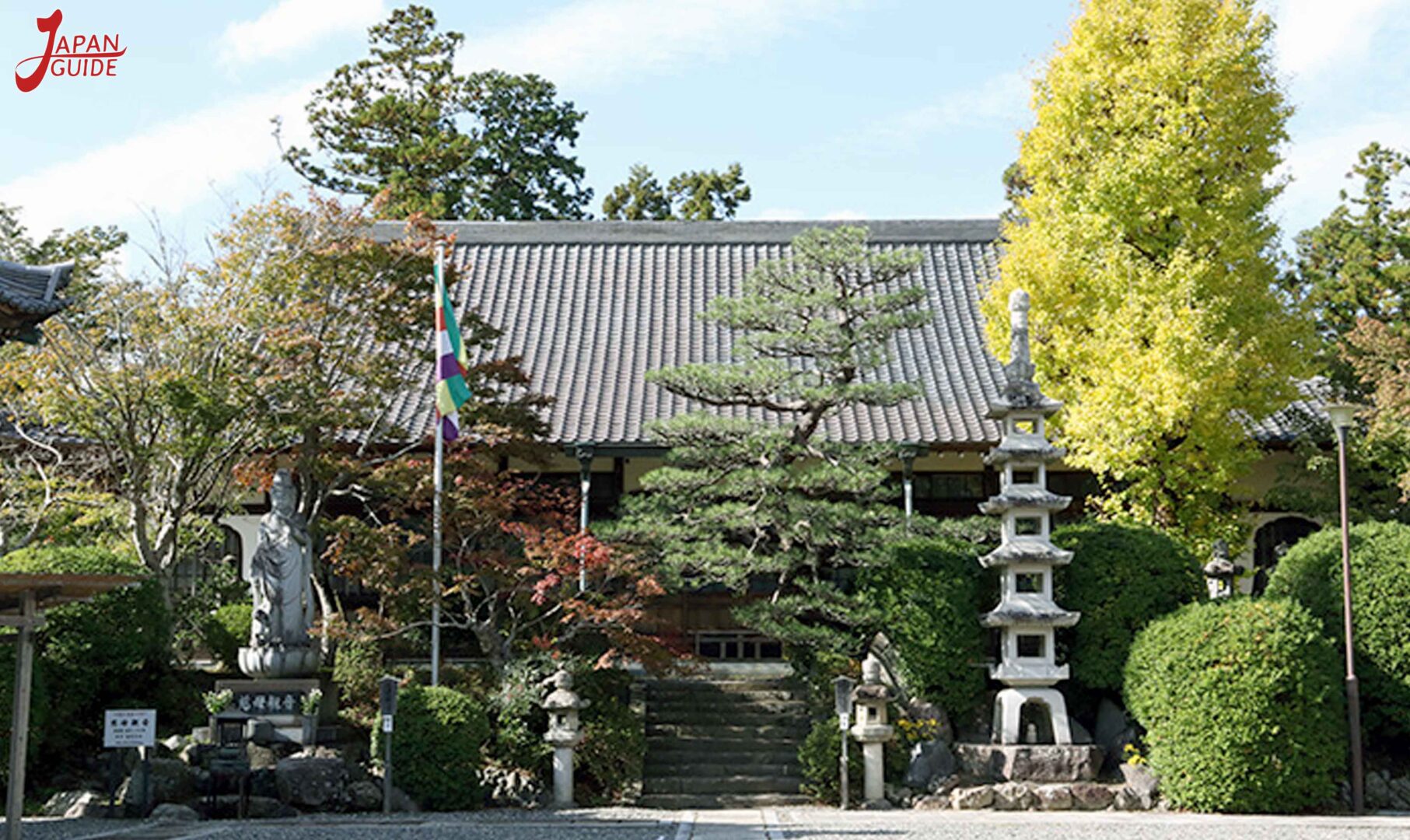
Mortuary Chapel
The spirits of parishioners’ ancestors, those who died in battle, and those who were Kasuisai’s relatives are enshrined under Kannon’s protection.
It is a burial room where important plaques are enshrined for memorial services for the deceased.

Observatory
If you go up the narrow stone pavement on the right side of the main sanctuary, you will come to an open area with a beautiful view. Take a break while looking at the tiles of Zuiryukaku and the streets of Fukuroi.
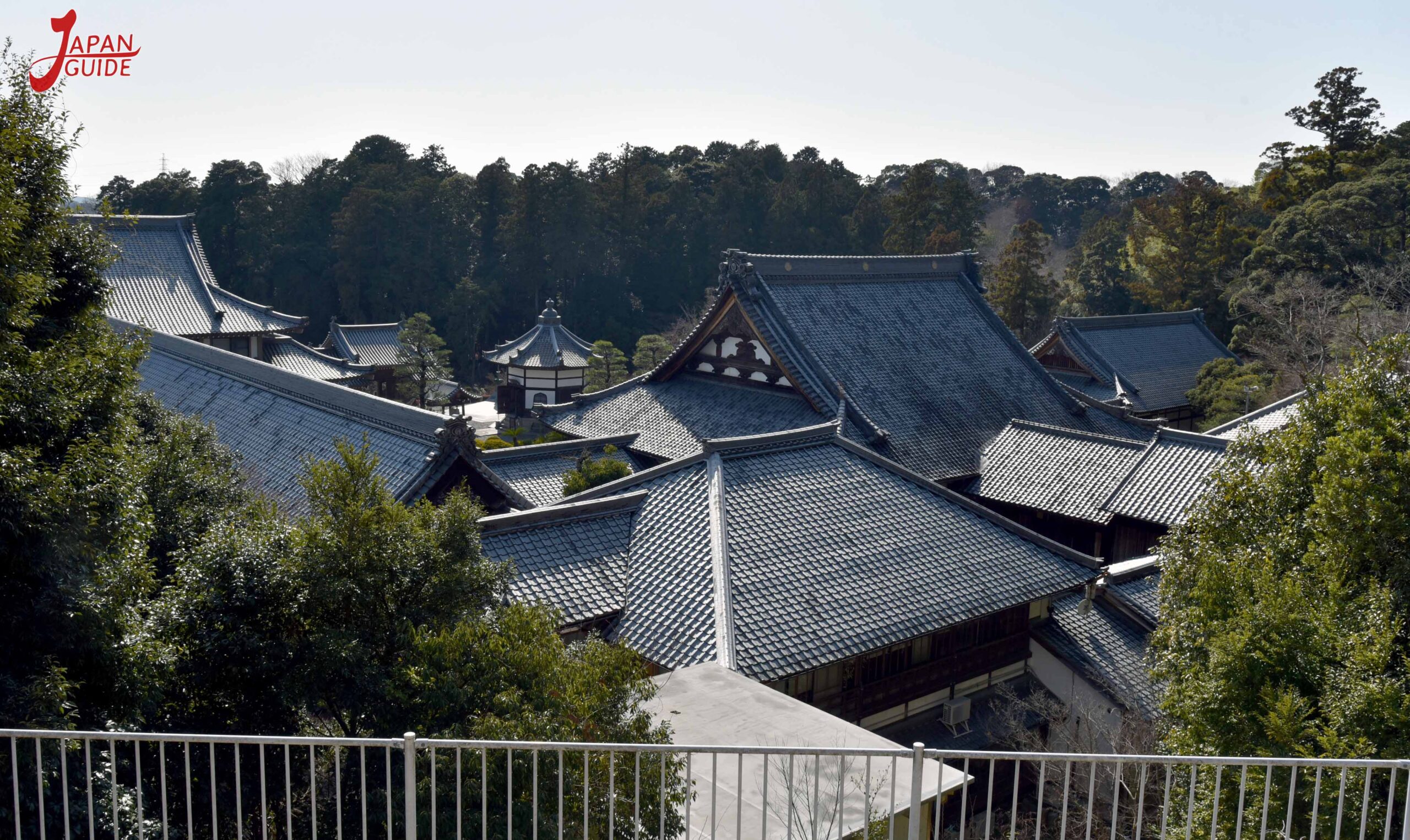



Baths of the God of fire that burns worldly desires
Daito Tsukasa (featured bathroom), is a bathroom with a beautifully polished wooden floor with a flush toilet that was rare in this era (1937).


Kasuisai Hinamatsuri
Zuiryukaku’s grand hall is decorated with 1.200 hina dolls on 32 floors that almost reach the ceiling and is considered one of Japan’s biggest and very popular hina doll festivals.


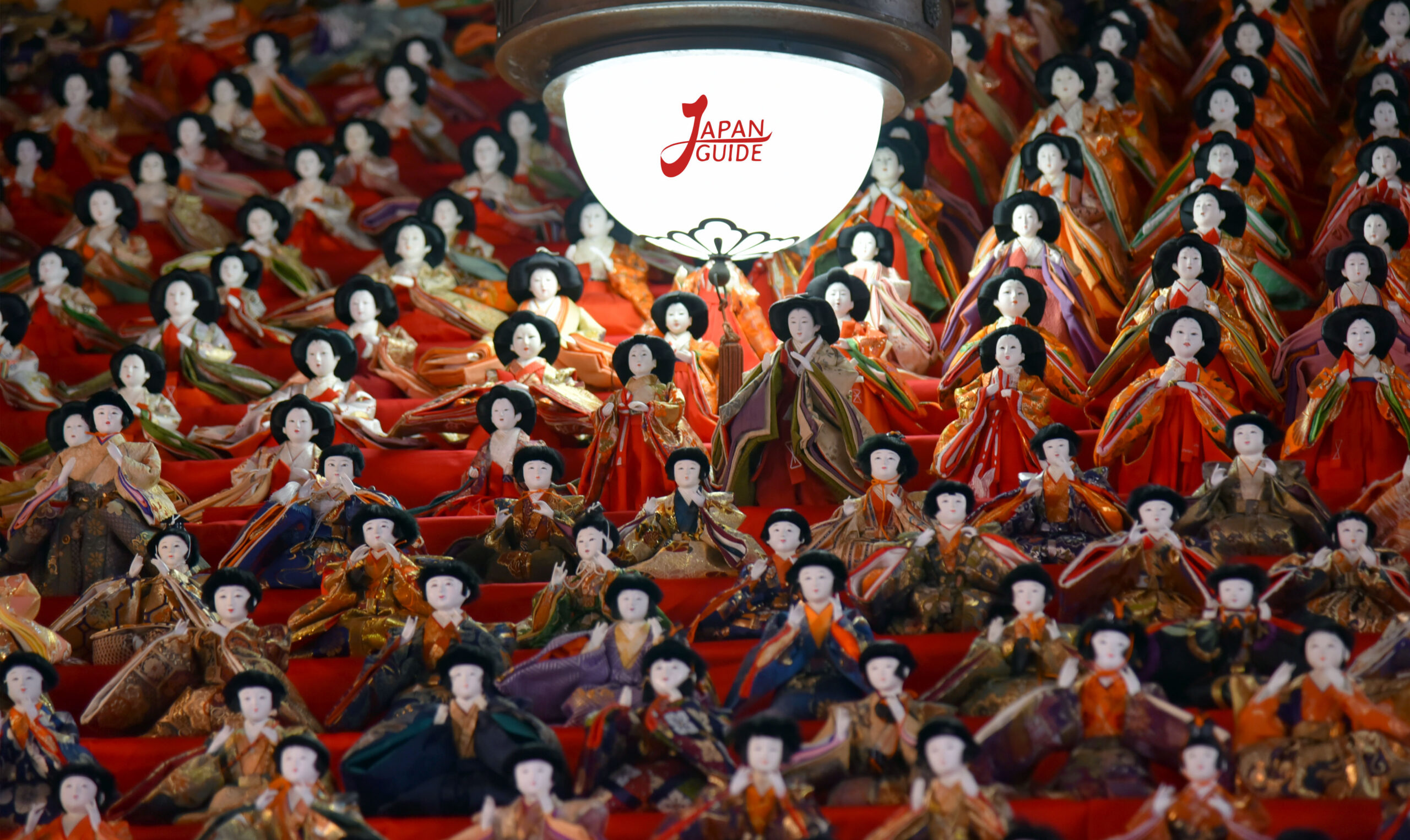


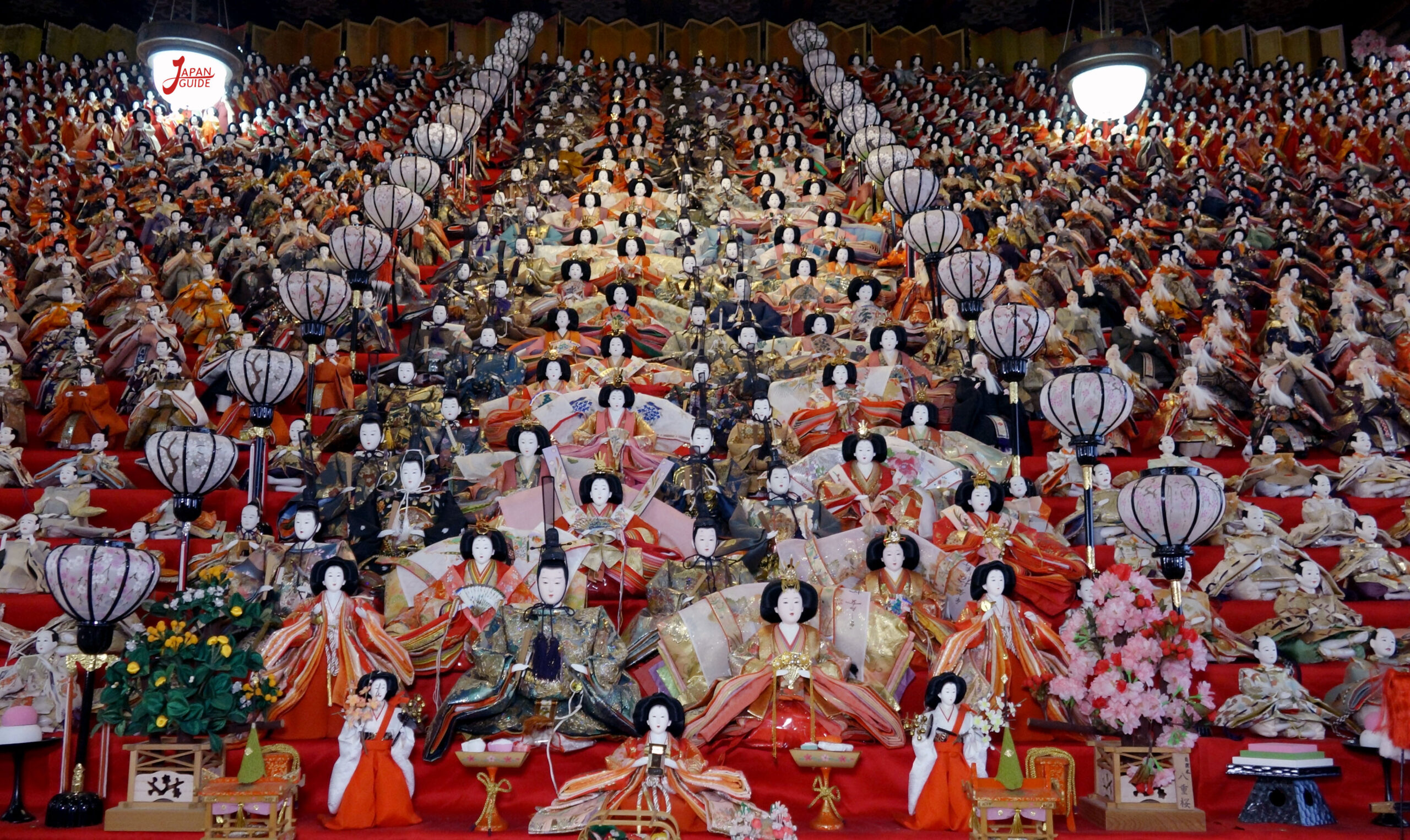

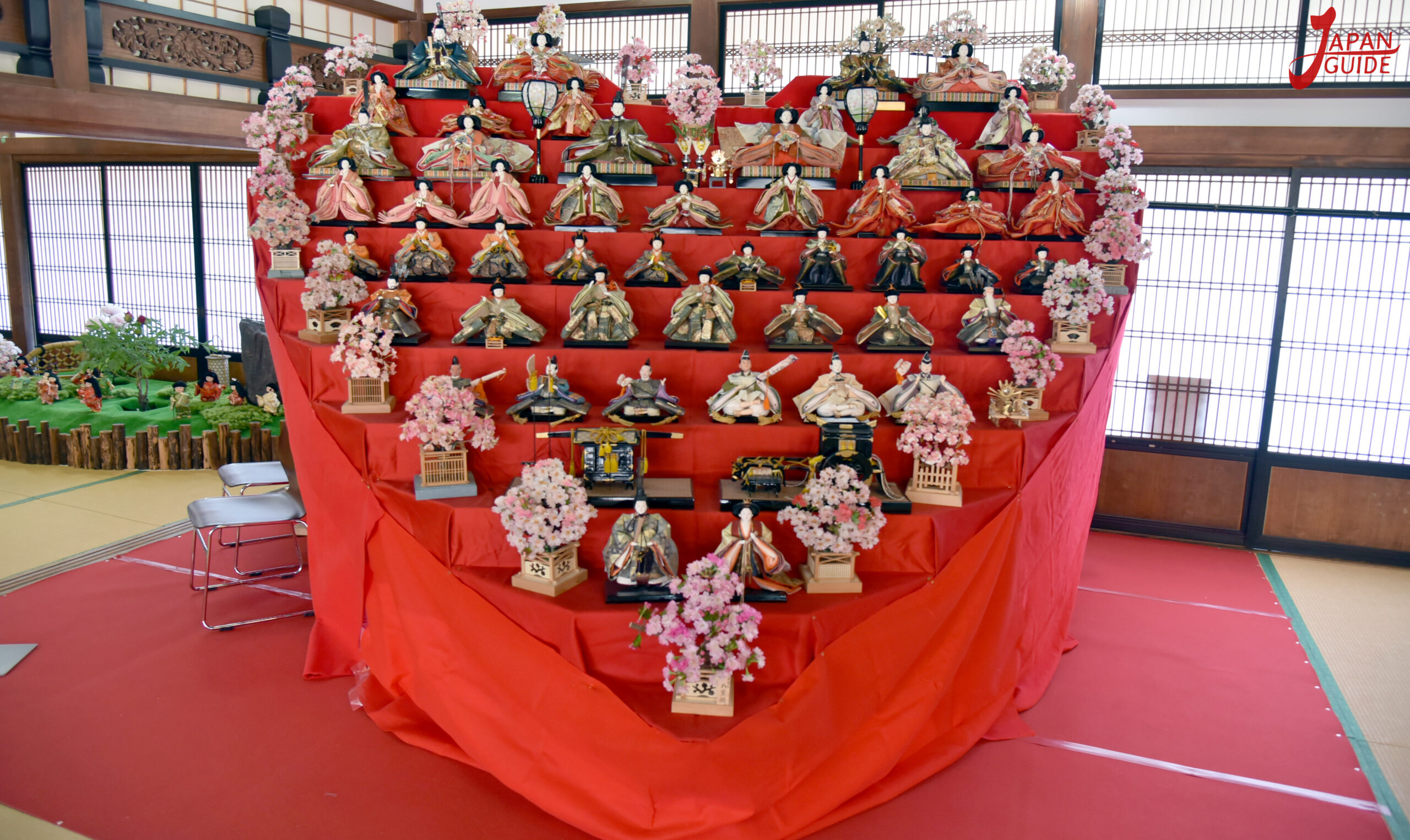
Festival of Wind Chimes
Approximately 2.000 colorful Edo wind chimes hang from the “Furin no Komichi” from the temple gate to the main hall, creating a prayer path that soothes the soul with the cool tones of the wind chimes.


EVENTS AND FESTIVALS
- Oração de Ano Novo: 1º a 15 de janeiro.
- Hina Matsuri (Festival das Bonecas): 1º de janeiro a 31 de março das 8:00 às 17:00, adultos 500 ienes por pessoa.
- Festa Setsubun: 3 de fevereiro.
- Festival do Nirvana: 15 de fevereiro.
- Incenso Shuban-yaki no Memorial Kaizan: 5 de março.
- Festa do Equinócio da Primavera: 17 a 24 de março.
- Festival Botan Sansan: de meados de abril a inicio de maio das 8:00 às 17:00, adultos 500 ienes por pessoa.
- Grande Festival de Sakezuka Kannon: 29 de abril.
- Festival do Carrilhão de Vento: Final de maio a final de agosto, das 8:30 às 16:30, adultos 500 ienes por pessoa.
- Sanmon Daishokukai: 7 de agosto.
- Festival de Urabon: 13 a 15 de agosto.
- Serviço memorial dos mortos na guerra mundial (Grande Festival de Okunoin Fudoson): 28 de agosto.
- Busatsukai: meados de setembro.
- Semana equinocial de outono: de 20 a 26 de setembro.
- Hojokai: 21 de setembro.
- Ryoso-ki (incenso): 29 de setembro.
- Memorial de Bodhidharma: 5 de outubro.
- Folhas de Outono: final de novembro a início de dezembro.
- Rohachi Dai Seshinkai: 1º a 18 de dezembro.
- Joudokai: 8 de dezembro.
- Linha de água (purificação da mente): 10 de dezembro a 16 de dezembro.
- Festival do Fogo de Akiba: 15 de dezembro.
- Método secreto cerimônia de oferta de setenta e cinco mesas: 15 de dezembro.
- Bolos de arroz batidos: 28 de dezembro.
- Sino da Véspera de Ano Novo: 31 de dezembro.
Hours: 8:00 am to 5:00 pm.
Parking: Free
WC: Available


Shizuoka Fukuroi Kuno 2915-1
